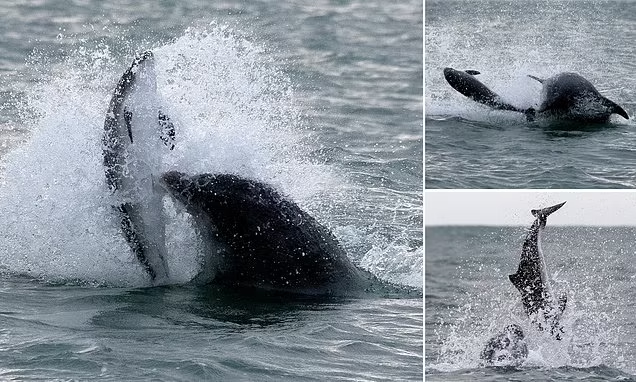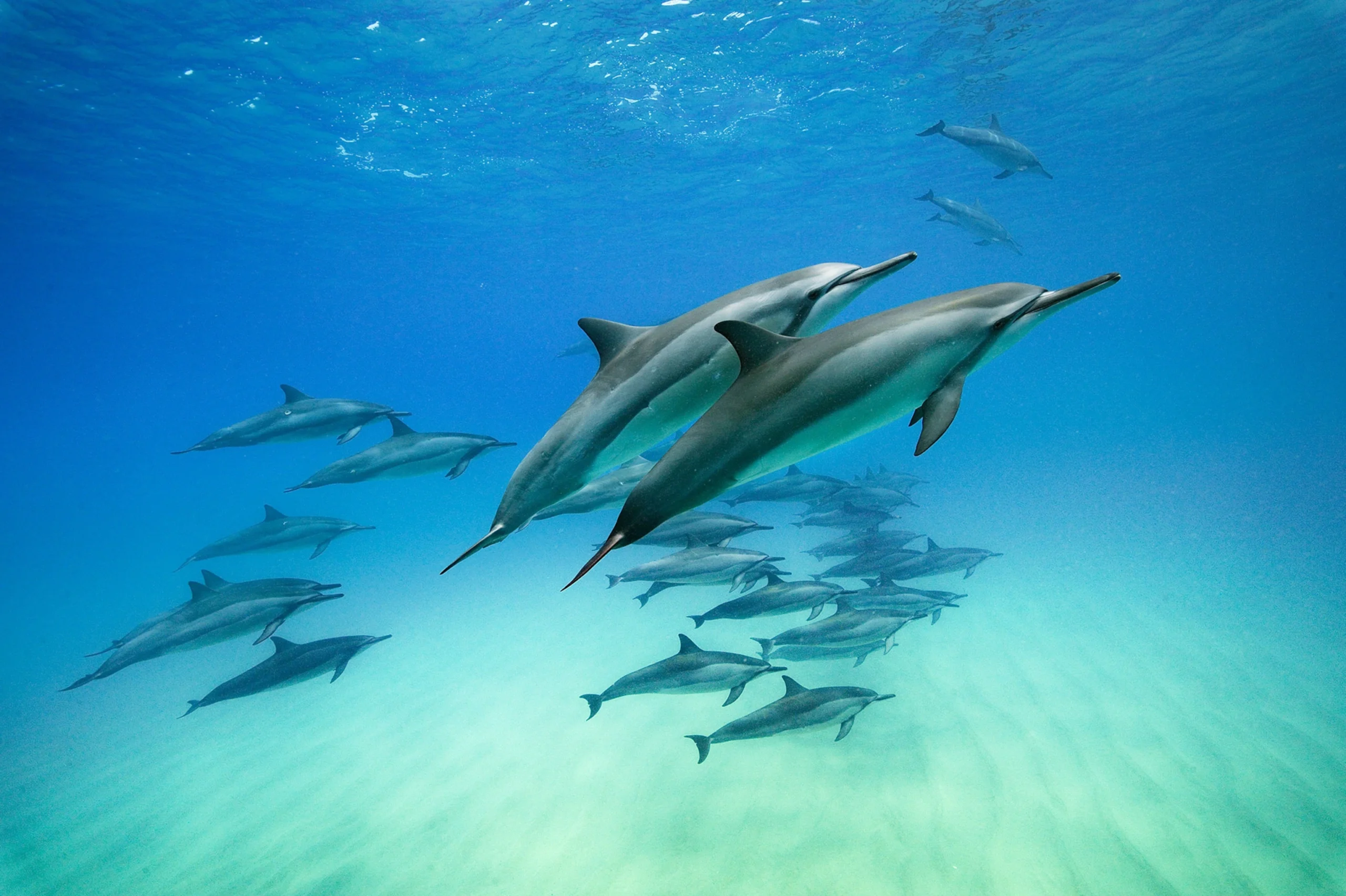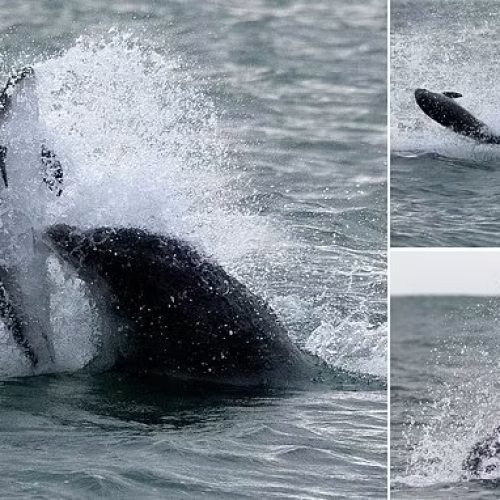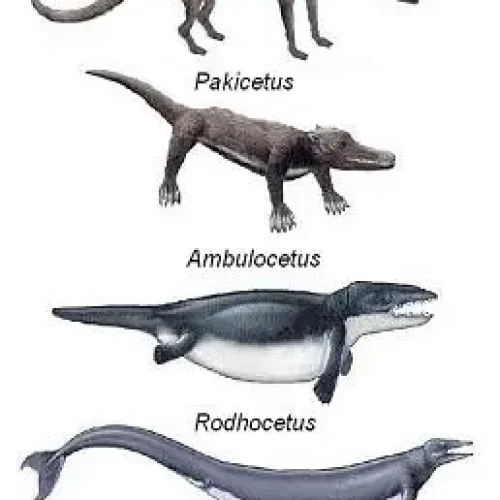In this article
DOLPHIN BIOLOGY 101: MAMMALIAN MARVELS
Gliding through the ocean with graceful precision, dolphins captivate our imagination. Yet, a common misconception persists: many still refer to these intelligent creatures as fish.
Let’s dive into the fascinating world of dolphin biology and uncover why these aquatic acrobats are, in fact, mammals in disguise.
Unlike their cold-blooded fish neighbours, dolphins maintain a constant body temperature of around 36°C.
This mammalian trait allows them to thrive in diverse marine environments, from tropical waters to chilly polar seas.
Their blubber layer, a characteristic shared with other marine mammals, serves as both insulation and energy storage.
The telltale signs of mammalian ancestry
Dolphins bear unmistakable hallmarks of their terrestrial mammalian heritage:
• Live birth: Unlike fish that typically lay eggs, dolphins give birth to fully formed calves.
• Maternal care: Dolphin mothers nurse their young with nutrient-rich milk, a defining feature of mammals.
• Lungs, not gills: Dolphins lack gills and must surface regularly to breathe air.
• Hair: While not furry like their land-dwelling cousins, dolphins are born with a few whiskers that usually fall out shortly after birth.
These traits clearly set dolphins apart from fish and firmly place them in the mammalian family tree.
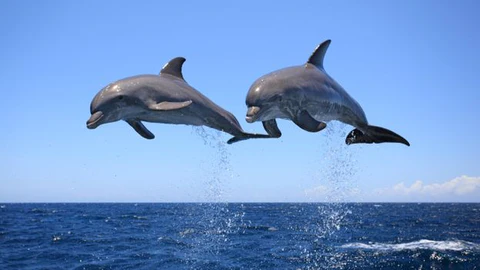
Breathing air: The blowhole breakthrough
Perhaps the most visible sign of a dolphin’s mammalian nature is its blowhole – a nostril that has migrated to the top of the head through evolution.
This adaptation allows dolphins to breathe efficiently at the water’s surface without fully exposing their bodies.
When a dolphin surfaces, it exhales forcefully through its blowhole, expelling stale air in a distinctive spout. This is followed by a quick inhalation before diving again.
This breathing pattern is markedly different from the continuous gill respiration of fish.
The mammalian brain advantage
Dolphins possess large, complex brains relative to their body size.
This advanced brain structure supports their remarkable intelligence, problem-solving abilities, and social behaviours.
Studies have shown dolphins using tools, exhibiting self-awareness, and even developing unique whistles as individual names within their pods.
Echolocation: A mammalian superpower
While not exclusive to mammals, echolocation in dolphins is highly sophisticated.
By producing high-frequency clicks and interpreting the echoes, dolphins can navigate, hunt, and communicate in ways that surpass the abilities of most fish species.
Understanding dolphins as mammals rather than fish is crucial for their conservation.
As air-breathing creatures, they face unique threats such as entanglement in fishing gear and collisions with boats. Recognising their mammalian status helps inform more effective protection strategies.
FISH OUT OF WATER: KEY DIFFERENCES EXPOSED
At first glance, dolphins might seem to fit the bill as fish. They live in water, have fins, and sport a streamlined body perfect for aquatic life.
However, these remarkable creatures are far from being fish – they’re mammals through and through.
Reproduction and nursing young
One of the most striking differences between dolphins and fish lies in how they bring new life into the world. Unlike fish, which typically lay eggs, dolphins give birth to live young.
This process, known as viviparity, is a hallmark of mammalian reproduction.
• Dolphin calves are born tail-first to prevent drowning
• Mothers nurse their young with nutrient-rich milk
• Gestation periods range from 10 to 12 months, depending on the species
The bond between a dolphin mother and her calf is strong, with nursing lasting up to 18 months in some species.
This extended period of parental care is crucial for the calf’s survival and learning, a stark contrast to the hands-off approach of most fish species.
Skeletal structure and limb evolution
Peek beneath a dolphin’s skin, and you’ll find a skeleton that tells the tale of their terrestrial ancestry.
Unlike fish, which have fins supported by ray-like structures, dolphins possess limb bones remarkably similar to those of land mammals.
• Pectoral fins contain bones analogous to our arms and hands
• Vestigial hip bones hint at the dolphins’ four-legged past
• Tail flukes are boneless, unlike the bony tail fins of fish
Recent paleontological discoveries in France have shed new light on dolphin evolution.
A team from the National Museum of Natural History in Paris unearthed fossilized remains of an ancient whale ancestor, providing further evidence of the gradual adaptation of land mammals to marine life.
This 42-million-year-old specimen, dubbed “Peregocetus pacificus,” still had small hooves on its toes, highlighting the remarkable journey of cetacean evolution.
Brain size and cognitive capabilities
Perhaps the most compelling difference between dolphins and fish lies between their ears.
Dolphins boast large, complex brains relative to their body size, with a level of cognitive sophistication that rivals many primates.
• Dolphin brains are roughly 1700 grams, compared to the 1300 grams of an average human brain
• They demonstrate self-awareness, problem-solving skills, and complex social behaviors
• Dolphins use tools, a behavior rarely seen in fish species
Research conducted at the University of Marseille has revealed that dolphins possess a unique sleeping pattern, allowing one brain hemisphere to rest while the other remains alert.
This ability, unheard of in fish, enables dolphins to surface for air and remain vigilant against predators even while sleeping.
The cognitive prowess of dolphins extends to their communication abilities.
While fish typically rely on simple sounds or visual displays, dolphins use a complex system of whistles, clicks, and body language to convey information.
Some scientists even speculate that their vocalizations might constitute a form of language, though this remains a topic of ongoing research and debate.
EVOLUTIONARY JOURNEY: FROM LAND TO SEA
The story of dolphin evolution is a captivating tale of adaptation and survival.
These marine mammals, once terrestrial creatures, embarked on an extraordinary journey back to the sea.
Palaeontologists have unearthed a wealth of fossil evidence that illuminates the dolphin’s evolutionary journey:
• Pakicetus: Dating back about 50 million years, this wolf-sized creature is considered one of the earliest whale ancestors. It lived near the shore and likely hunted in shallow waters.
• Ambulocetus: Known as the “walking whale,” this semi-aquatic mammal lived around 49 million years ago. Its fossils show adaptations for both land and water.
• Rodhocetus: This 47-million-year-old fossil represents a crucial transitional form, with a more streamlined body and tail adapted for powerful swimming.
These fossils paint a picture of gradual adaptation, as early whale ancestors became increasingly suited to aquatic life.
Convergent evolution with fish
While dolphins evolved from land mammals, they developed numerous features that superficially resemble fish.
This phenomenon, known as convergent evolution, occurs when unrelated species evolve similar traits in response to comparable environmental pressures.
Key examples of convergent evolution in dolphins include:
• Streamlined body shape: Reduces drag in water, similar to many fish species.
• Flippers: Modified limbs that function like fish fins for steering and balance.
• Tail flukes: Powerful propulsion organs that resemble fish tails in function, if not in structure.
These adaptations allowed dolphins to thrive in their new aquatic environment, despite their mammalian origins.
Adaptations that blur the lines
As dolphins transitioned to a fully aquatic lifestyle, they developed a suite of adaptations that can sometimes lead to confusion with fish:
1. Smooth skin: Dolphins lost most of their hair, developing smooth skin that reduces drag in water.
2. Blubber layer: This insulating fat layer replaced fur for temperature regulation, a function similar to some fish adaptations.
3. Torpedo-shaped body: This hydrodynamic form is shared by many fast-swimming fish species.
4. Diving adaptations: Like some fish, dolphins have physiological adaptations for deep diving, including collapsible lungs and blood chemistry changes.
Despite these fish-like features, dolphins retain core mammalian characteristics that set them apart.
The evolutionary journey back to the ocean came with trade-offs. Dolphins lost their hind limbs, which became vestigial over time.
Their forelimbs transformed into flippers, sacrificing dexterity for aquatic efficiency.
The birth process became more challenging in an aquatic environment, leading to adaptations in calf positioning and rapid swimming abilities at birth.
Modern genetic analysis has provided further insight into dolphin evolution. Studies have revealed genetic remnants of their terrestrial past, including dormant genes related to limb development and hair growth.
This genetic evidence corroborates the fossil record, painting a comprehensive picture of dolphin evolution.
The evolutionary journey of dolphins from land to sea spans millions of years, resulting in creatures perfectly adapted to marine life while retaining their mammalian essence.
This remarkable transformation showcases nature’s ability to shape life in response to environmental challenges, blurring the lines between terrestrial and aquatic realms.

